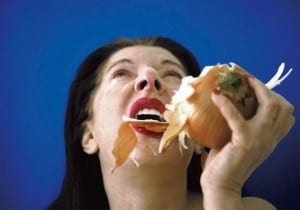After reading Jo Bonney’s Introduction to Extreme exposure: An anthology of solo performance texts from the 20th Century, I was able to see the diverse and complicated nature of creating a show single handily. A key aspect addressed in the article was how the performer can have full ownership of the performance he/she creates, allowing flexibility to explore and experiment within the work. This can work for and against the performer as it can be difficult to work by yourself with no one to bounce ideas off. By having full ownership, it can put the performer in a heightened state of vulnerability, leaving the personal artistic vision open to criticism from the audience. Generally, a solo show can bring down the cost of a production due to the smaller production values (however this is dependent on the varying content of performances) leaving a possibly higher profit margin. It may also be easier to organise with having a small company size. Bonney comments that although the performance may be accomplished by one single performer, it can still be managed by writers and directors. The work, in my opinion, can become more politically charged as it represents one voice and is represented by one performer/actor which differs from a big cast where the strong subject can be diluted by having many characters or a big cast.
Solo performance art has been seen through the ages. From Shakespearean monologues, to poetry, vaudeville and stand up comedy, each of these forms have used a solitary performer/character on stage. Through the 1980’s and 90’s, there was a surge of more contemporary performance art works that leaned towards that of experimentation. The problem with these works was that they created a stigma for future solo works where they were associated with experimental art works. I feel that through the examples that I have seen that this stigma is still there but for appropriate reasons, one being that as Bonney rightfully says ‘solo performance is storytelling’. These performances represent journeys, whether personal or fictional and even journeys experienced throughout. With each new audience there will always be a unique response to the material and so I feel the term it is a positive connotation to accept.
One thing I hope to discover in the process is the concept of solo performance as a selfish act. I have seen many performances that have relied solely on one person and they appeared to be very self-indulgent experiences. I am curious to examine if solo performances have become more popular to perform in recent times and if so, is it a case of practicality or something that is to do with our nature to express ourselves?
I have been looking at many practitioners in order to get a feel for the variety that solo performances can offer. I particularly enjoyed the works of Tim Crouch, who I sadly missed a few years back in Edinburgh when he performed The Author. I watched an extract of An Oak Tree, in which he invited a new actor to accompany him in telling the story of a hypnotist who ran over a child. The actor plays the role of the parent who lost the child but is unaware of this. It appears to be a very intimate performance with just the focus on Tim Crouch as he is the only one who has full knowledge of the performance. The audience can in a way synchronise and sympathise with him, giving Tim greater control and a more compliant audience. The show also destroys the barrier between audience and performer as Tim is having to work instinctively, reacting to the actor, unable to predict the possible outcomes. This sense of unpredictability is an attractive quality to me as a performer and theatre goer, leaving a shows outcome up to unforeseen circumstances. Tim Crouch in this instance shares his ownership with the spectators, with the limelight being shared almost as a form of demonstration to theatrical formalities.

One practitioner I wasn’t sure on was Marina Abramovic. I watched The Onion where, in a close up camera shot, she devours a whole onion. She looked to be in real agony to which I responded to with laughter. I think if I saw someone forced to eat an onion I would be shocked but due to the fact that she is doing it by choice made it humorous to me. People will argue whether it is art, and who am I to say it isn’t. What is interesting is that many people online do stupid challenges and so in present day, what makes this work stand out to everyone else? She is known to ‘abuse’ her body for the sake of art, which could be appealing as I feel she demonstrates the limits of the human body versus the limits of the mind. This could be because the dialogue between audience and performer is unspoken and left to interpretation where as solo performance has a personal dialogue. Throughout the rest of the module it will be interesting to revisit this post and explore whether my opinions stay the same.
Please check out the links in the works cited.
Work cited
Bonney, Jo (2000) Introduction to Extreme exposure: An anthology of solo performance texts from the 20th Century, New York: Theatre Communications Group.
Juliagheek (2007) An Oak tree by Tim Crouch, online: http://www.youtube.com/watch?v=gIf3a49W_iI accessed 27/1/14.
MissMilkMelon (2013) Marina Abramovic: The Onion, online: http://www.youtube.com/watch?v=bI8zl6UuSOs accessed 27/1/14.
